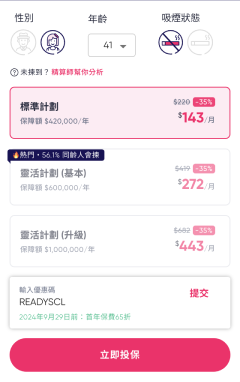Level Premium
Level premium means that the premium amount paid each month or year does not change, regardless of changes in the insured’s age or health. This article will guide you through the concept of level premium, how it differs from other premium structures, and why it may be a good choice for some individuals seeking life insurance.
What is Level Premium?
Level premium is a type of insurance premium where the premium remains constant throughout the entire policy period, meaning it does not increase with the age of the insured. The advantage of this type of premium payment is that policyholders can budget for the same amount of premiums over the life of the policy and do not have to worry about a substantial increase in premiums in the future that may be difficult to manage.
Use Cases of Level Premium
Many insurance plans in the market offer the option of a level premium, with savings insurance being the most likely to adopt this payment method. Other plans that use level premiums include long-term policies such as whole life, long-term hospitalisation, and critical illness insurance.
Level Premium VS Stepped Premium: What are the differences?
In addition to level premiums, there are also stepped premium options, where premiums increase annually as the insured ages. This payment method is more commonly used for protection-type products such as term life insurance, where the risk increases as the insured ages, and premiums need to reflect the higher risk.
In theory, the premium for a level premium payment is fixed for each period, while for a stepped premium payment, the premium is recalculated annually to reflect the insured’s increasing age and inflation factors. The adjustment to stepped premiums is usually more apparent as the insured ages.
In general, the total premiums for the same insured person will not vary significantly between the two payment methods. However, choosing a level premium payment will result in higher total premiums during the early years of the policy, while choosing a stepped premium payment will result in lower initial premiums.
Ultimately, the choice between the two payment methods depends on individual needs and financial abilities. If budgeting is a concern, a level premium payment may be more suitable, while those who want to reduce financial burden in the early years may opt for a stepped premium payment.
So… Which is right for you?
Let’s use the following real-life example to illustrate how to choose the premium calculation method that suits oneself.

Mr. Chan, who is 30 years old, is the main source of income for his family. In order to provide his family with a stable life, he is preparing to buy a property.
At the same time, he also considers that if he unfortunately passes away during the mortgage payment period, the mortgage payment will bring a significant burden to his family. Therefore, he hopes to purchase a life insurance policy and is considering choosing between a level premium whole life insurance and a term life insurance with a stepped premium calculation.
Considering that there are many expenses during the initial stage of buying a property, Mr. Chan ultimately chose a term life insurance with a stepped premium calculation.
In addition to obtaining life insurance protection during the mortgage payment period, one of the main reasons for choosing the stepped premium calculation is that he is still relatively young, so the current premium is still relatively cheap, which allows him to reserve more money for mortgage payments and the purchase of furniture and other purposes.
Nonetheless, the goal of this life insurance policy is to cover the remaining mortgage balance with a specified repayment term, therefore, once he fully repays the mortgage in the future, he can choose to surrender the term life insurance policy without any loss
